The last two stages of the Gradual release of responsibility are You do it together and You do it alone. Coincidentally, these stages align nicely with the last two reading procedures recommended by the authors of First Steps in Reading Resource Book : Book discussion groups and Independent reading. With each stage, more responsibility for learning and reading is being given to the student.
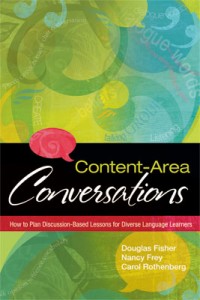 Fostering student talk is vital for learning, particularly when they employ the use of academic language. From their book, Content-Area Conversations, Fisher, Frey and Rothenberg state that students need more time to talk and that the key to learning is for students to talk with one another in purposeful ways, using academic language (2008).
Fostering student talk is vital for learning, particularly when they employ the use of academic language. From their book, Content-Area Conversations, Fisher, Frey and Rothenberg state that students need more time to talk and that the key to learning is for students to talk with one another in purposeful ways, using academic language (2008).
Book discussion groups (You do it together) promote student talk. Small groups of students meet to discuss, respond to and reflect on a common text that they have chosen. Key features include students selecting their texts from a range of available texts and each student having their own copy. A pre-determined amount of time is allocated for each text and groups meet on a regular basis. Different groups can be reading different texts and several groups can be meeting simultaneously.
It is the students’ responsibility to be prepared for each meeting and to contribute to the discussion of the text. Keeping a journal or response journal is great way for students to respond and reflect personally on the text. Another idea is to use an online forum such as an edStudio to respond to the text. There are many online discussion groups set up by authors and public libraries but it would be important to ensure these are legitimate sites.
An example of a book discussion group is a Literature circle, which I have found to be very effective and also appealing to students. I gradually introduced and modelled the roles by using one text with the whole class, before encouraging the students to run their own literature circles. My role as a teacher was then visiting each group and just listening, providing support when needed. It is important to offer a variety of texts for students to choose from. I have offered photocopied articles or the introduction to a chapter book. It is really exciting to hear students discussing a text in a deep and meaningful way. There is a lot of information on the internet, but here is a link to Sheena Cameron’s resources on literature circles – a great start if this is something that interests you.
 The last procedure is independent reading and of course it fits the last stage of the gradual release process (You do it alone). This is our goal – students independently reading and applying the reading strategies that they have been exposed to during the other procedures. Students choose their own texts but are encouraged to select from a wide variety of literary and informational texts (I have collected hundreds of books and refuse to part with any of them as they form a vital part of my classroom). Texts could include those previously read in the other reading procedures, other texts written by the same author and texts that match the students’ interests. It is all about reading for enjoyment.
The last procedure is independent reading and of course it fits the last stage of the gradual release process (You do it alone). This is our goal – students independently reading and applying the reading strategies that they have been exposed to during the other procedures. Students choose their own texts but are encouraged to select from a wide variety of literary and informational texts (I have collected hundreds of books and refuse to part with any of them as they form a vital part of my classroom). Texts could include those previously read in the other reading procedures, other texts written by the same author and texts that match the students’ interests. It is all about reading for enjoyment.
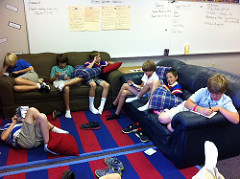
When I began teaching, I knew independent reading as Uninterrupted Silent Sustained Reading (USSR). When I first used USSR in the classroom, I also read silently but as I became more experienced I saw this as a fantastic opportunity to listen to and question students individually about what they were reading.
pgcummings via Compfight cc
Each day during independent reading, I would sit beside students and ask what the text was about, what they were enjoying, how they were applying the focused reading strategy for the week and take a short, informal running record. By the end of the week, I would have sat with each student at least once and collected absolutely invaluable data about his/her reading.
Allington (2002) wrote that dedicated reading and writing should be planned for as much as half of each day with at least 90 minutes of ‘eyes-on and minds-on’ texts. This could certainly be achieved using the variety of reading procedures recommended by the authors of First steps in reading across all the curriculum learning areas.
I will leave this blog with a couple of things to ponder. In your classroom:
- Is your reading approach over the course of a week balanced?
- As the week (or unit) progresses, do you use a gradual release of responsibility?
- How much time each day is dedicated to planned reading (and writing)?
- Are you using texts from all the different curriculum learning areas as a part of that balanced reading approach?
- What is the ratio of teacher talk to student talk?


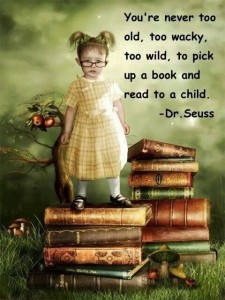
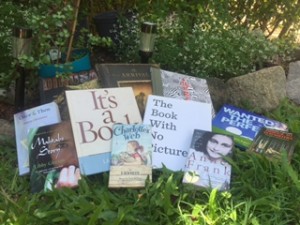

 4 out of 5 indigenous kids in remote communities cannot read! Recently, Lyn Sharratt, the well-renowned co-author of Putting Faces on the Data, was working with a number of Metropolitan schools in Queensland and she used a photo she had taken of a bus shelter that displayed data similar to this statistic. Regardless of age or background, Lyn repeatedly expressed the sense of urgency needed around the teaching of reading.
4 out of 5 indigenous kids in remote communities cannot read! Recently, Lyn Sharratt, the well-renowned co-author of Putting Faces on the Data, was working with a number of Metropolitan schools in Queensland and she used a photo she had taken of a bus shelter that displayed data similar to this statistic. Regardless of age or background, Lyn repeatedly expressed the sense of urgency needed around the teaching of reading.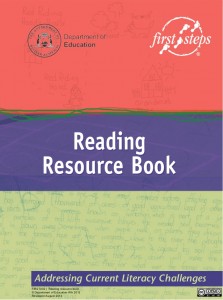 I have begun my personal reading on this topic with the
I have begun my personal reading on this topic with the